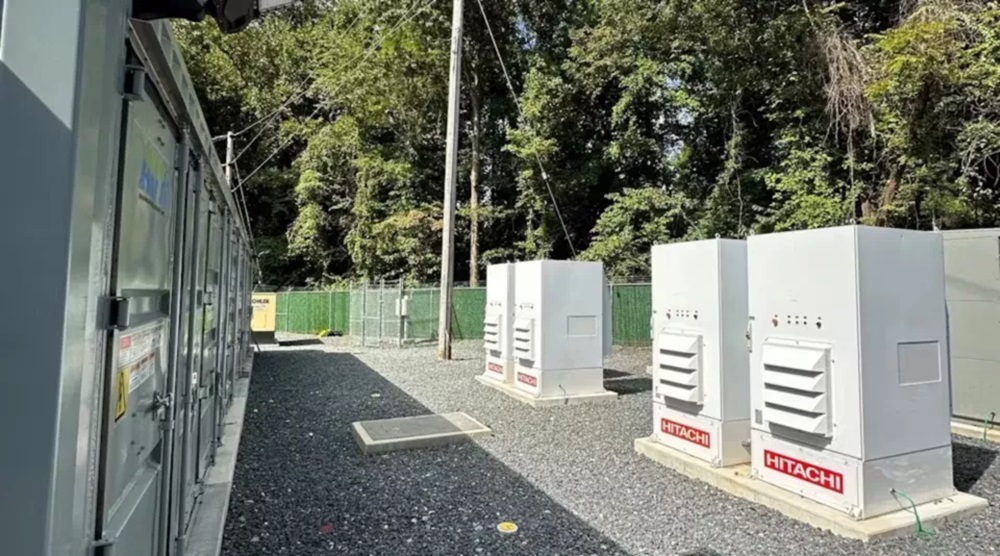Maryland’s largest utility, Baltimore Gas and Electric (BGE), has turned to a 2.5 MW/9.74 MWh battery energy storage system to meet high electricity demand during the winter months in Fairhaven, located just south of Annapolis.
The battery system, which is installed at the Fairhaven substation near Chesapeake Bay and began operating in November, is built largely with Hitachi Energy products. It has two battery containers with 48 racks of lithium-ion batteries, the company said, as well as a control system and two new distribution transformers.
The Fairhaven energy storage system was installed to solve a very specific reliability challenge in BGE’s footprint – unlike the rest of Maryland, which tends to see peak electricity demand during the summer, Fairhaven experiences a winter peak due to the usage of electric heaters. Because of this, the area’s total electricity load sometimes topped the capacity of the 34.5kV line in the region.
The new storage system helps address that issue by absorbing energy during times of low electricity demand and then discharging it back to the grid when demand increases. The battery system also allowed BGE to avoid the costs of upgrading some 10 miles of electric distribution infrastructure, according to Hitachi. And after the winter months, when it’s most needed, it can also participate in regional transmission organization PJM’s footprint.
“Participating in these sorts of markets can also help companies align with broader energy goals. Battery projects like the Fairhaven BESS contribute to grid stabilization, offering rapid response capabilities that are crucial for balancing supply and demand,” a Hitachi Energy spokesperson told pv magazine USA.
More broadly, energy storage plays an important role in ensuring reliability throughout different U.S. markets, including the PJM region, which includes 65 million people spread across 13 states and the District of Columbia, the spokesperson said.
“As the energy landscape evolves, the strategic deployment of [battery energy storage] technologies not only optimizes existing infrastructure but also fosters a resilient grid capable of adapting to changing demands, unforeseen events such as extreme weather, and the increasing prominence of renewable energy sources,” they added.
Maryland is aiming to deploy 3,000 MWh of energy storage resources by 2033, and the Fairhaven project is part of this goal, per the 2019 Maryland Energy Storage Pilot Project Act. BGE also deployed a separate battery project in the region – a 1 MW/2 MWh battery located in Chesapeake Beach – in January, 2023, also aimed at shifting energy to times when electricity demand is highest, especially in the winter months.
Both residential and grid-scale energy storage installations are growing across the U.S. A recent report from Wood Mackenzie and American Clean Power Association (ACP) found that the industry installed 13.5 GWh of storage in the first three quarters of 2023, compared to 12 GWh for all of 2022. This figure that could have been much higher, were it not for some 80% of projects in the pipeline being delayed.
This content is protected by copyright and may not be reused. If you want to cooperate with us and would like to reuse some of our content, please contact: editors@pv-magazine.com.








Another huge waste of lithium….when safer, cheaper and fire resistant options are available.
SAVE the lithium for ‘moving’ batteries ONLY (cars, planes, trains, etc.).